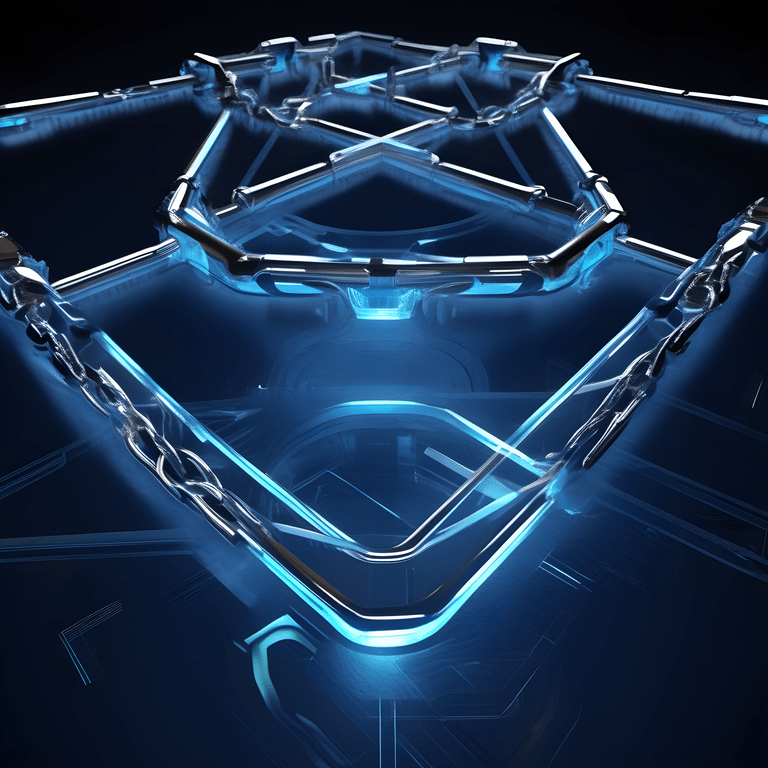Cryptocurrencies are digital assets that employ cryptography to safeguard transactions and control unit creation. They are decentralized, which means they are controlled by no central authority or middleman. However, not all cryptocurrencies use the same technology to achieve decentralization. Two of the most popular technologies are blockchain and tangle, which have different advantages and disadvantages.

What is Blockchain?
Blockchain is a technology that records transactions in a series of linked data blocks. Each block includes a cryptographic hash of the preceding block, a timestamp, and a collection of transactions. The blocks are stored and verified by a network of nodes, which are computers that participate in the system. The nodes use a consensus algorithm, such as proof-of-work or proof-of-stake, to agree on the validity of the blocks and prevent double-spending or tampering.
Blockchain is the technology behind Bitcoin, the first and most famous cryptocurrency. It is also used by many other cryptocurrencies, such as Ethereum, Litecoin, and Bitcoin Cash.
Blockchain has some advantages, such as:
• Security: Blockchain is resistant to hacking, as it would require an attacker to
control more than 50% of the network’s computing power to alter the history of
transactions.
• Transparency: Blockchain is public and immutable, meaning that anyone can see and verify the transactions and that they cannot be changed or deleted.
• Innovation: Blockchain enables the development of smart contracts, which are self-executing agreements that run on the blockchain, and decentralized
applications, which are applications that run on the blockchain without
intermediaries.
However, blockchain also has some disadvantages, such as:
• Scalability: Blockchain has a limited capacity to process transactions, as each
block has a fixed size and frequency. This leads to congestion, delays, and high
fees when the network is busy.
• Energy consumption: Blockchain consumes a lot of electricity, especially for
proof-of-work algorithms, which require nodes to perform complex mathematical
calculations to create and validate blocks.
• Centralization: Blockchain can become centralized, as some nodes may have
more power or influence than others, such as mining pools, large holders, or
developers.
What is Tangle?
Tangle is a technology that records transactions in a network of interlinked data chains. Each transaction contains a cryptographic hash of the previous two transactions, a timestamp, and a set of data. The transactions are stored and verified by a network of nodes, which are devices that participate in the system. The nodes use a tip selection algorithm, which randomly chooses two unconfirmed transactions to validate and attach to the network.
Tangle is the technology behind IOTA, a cryptocurrency that aims to enable the Internet of Things, which is a network of connected devices that exchange data and value. It is also used by some other cryptocurrencies, such as Nano, Helium, and Obyte.
Tangle has some advantages, such as:
• Scalability: Tangle has a high capacity to process transactions, as each
transaction creates more space and opportunities for validation. This leads to
fast, cheap, and seamless transactions, even when the network is busy.
• Energy efficiency: Tangle consumes very little electricity, as it does not require nodes to perform complex mathematical calculations to create and validate transactions.
• Decentralization: Tangle is fully decentralized, as all nodes have equal power and influence, and there is no need for intermediaries or incentives.
However, tangle also has some disadvantages, such as:
• Security: Tangle is vulnerable to attacks, as it relies on the network’s size and
activity to ensure its validity. An attacker could create many malicious
transactions or nodes to disrupt the network or double-spend.
• Transparency: Tangle is not public or immutable, meaning that some
transactions may be hidden or modified by the network or the developers.
• Innovation: Tangle is limited in its functionality, as it does not support smart
contracts or decentralized applications, which are essential for many use cases
and industries.
Tangle vs Blockchain
Which Technology is Better for Cryptocurrencies?
Tangle and blockchain are two different technologies that have their own strengths and weaknesses. Depending on the use case and the preferences of the users, one may be better than the other.
Here are some factors to consider when comparing tangle and blockchain:
• Decentralization: If you value a truly decentralized system that does not depend on any authority or incentive, tangle may be a better choice than blockchain, as it does not have any central points of failure or control.
• Transaction speed and fees: If you value fast and cheap transactions that do not depend on the network’s congestion or demand, tangle may be a better choice
than blockchain, as it does not have any limits or fees for transactions.
• Security: If you value a secure and reliable system that does not depend on the
network’s size or activity, blockchain may be a better choice than tangle, as it has
a proven track record of resisting attacks and maintaining its integrity.
• Functionality: If you value a versatile and innovative system that supports
various applications and industries, blockchain may be a better choice than
tangle, as it enables the development of smart contracts and decentralized
applications.
Conclusion
Tangle and blockchain are two technologies that offer different solutions for
decentralizing and securing transactions. They both have advantages and
disadvantages, and they may suit different use cases and users. Ultimately, the choice between tangle and blockchain depends on your needs and preferences, as well as the future developments and improvements of these technologies
Disclaimer
FAQ
DeFI stands for decentralized finance, offering open and accessible financial systems built on blockchain technology.
Yield farming involves earning interest by lending or staking cryptocurrencies.
Layer 1 blockchains are the primary networks (e.g., Ethereum), while layer 2 blockchains scale and improve performance on top of them.


